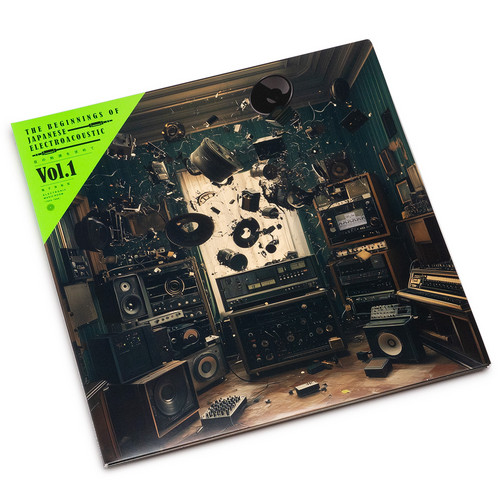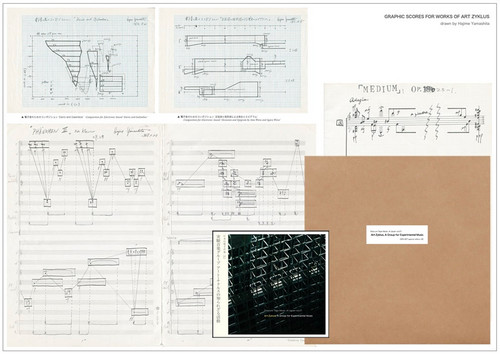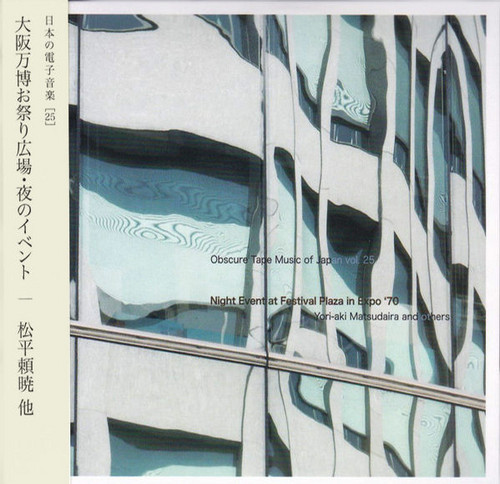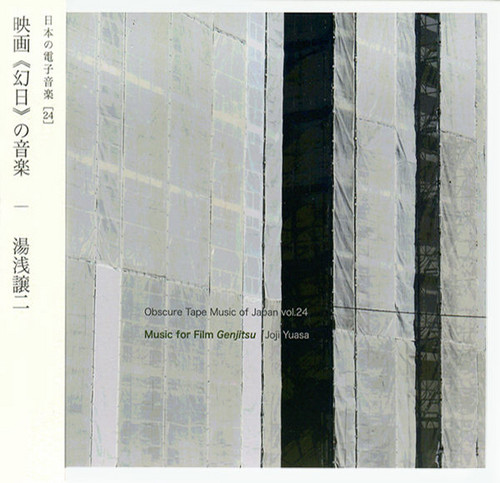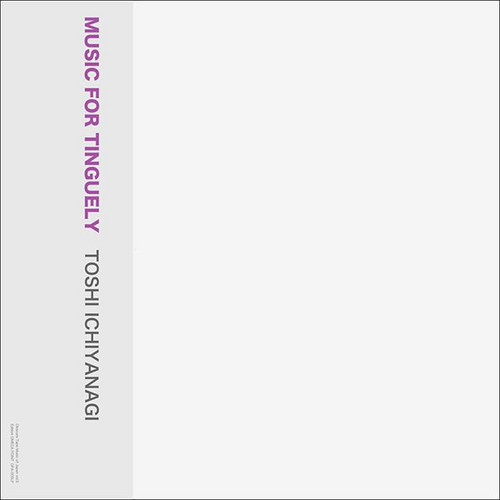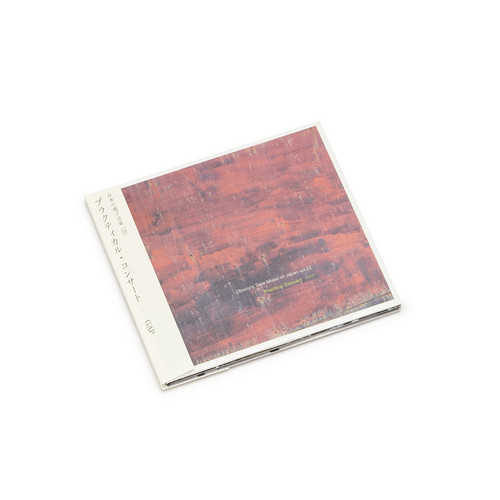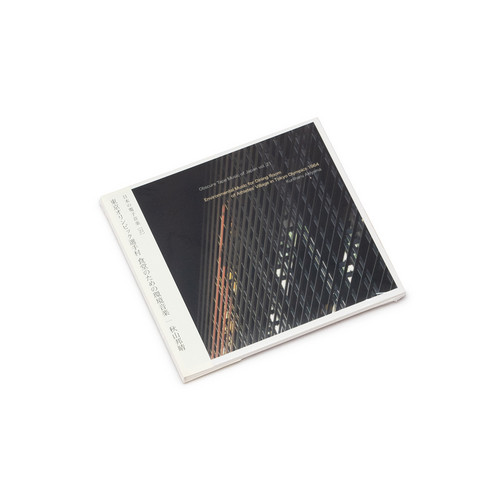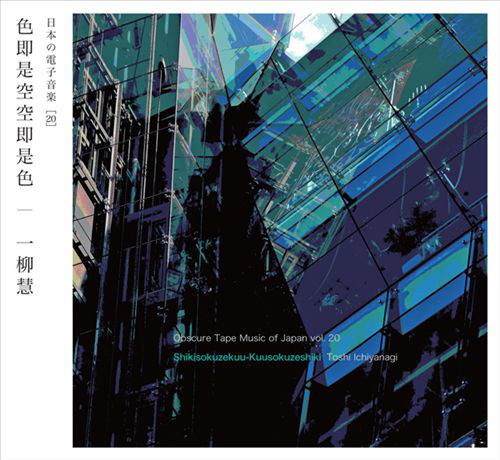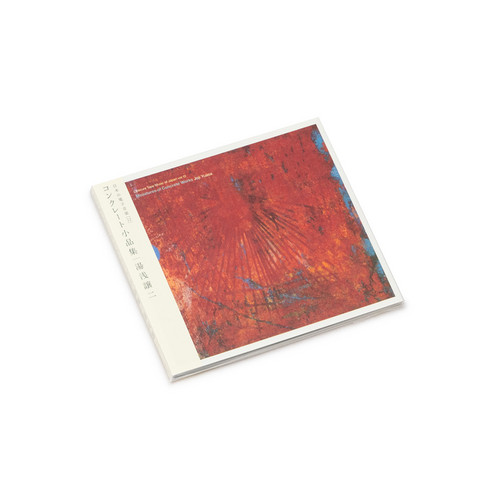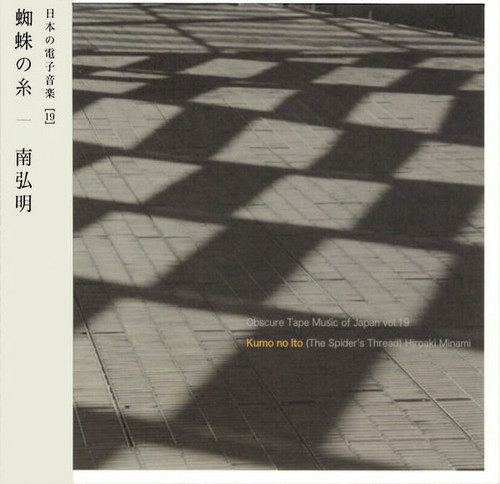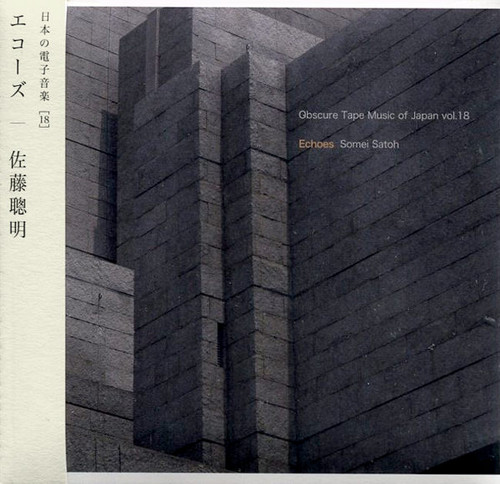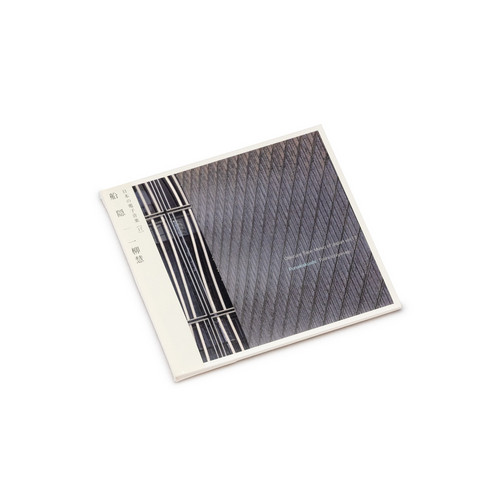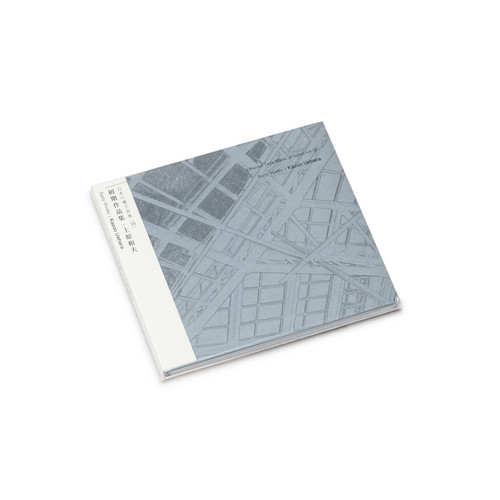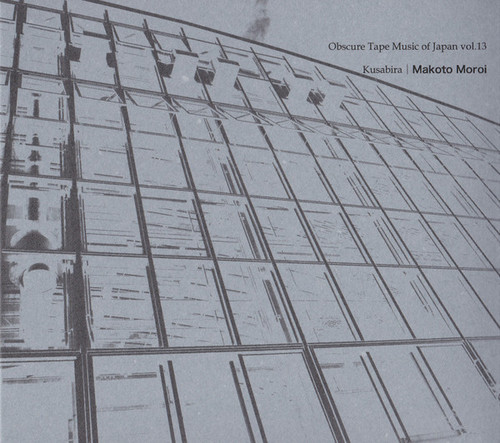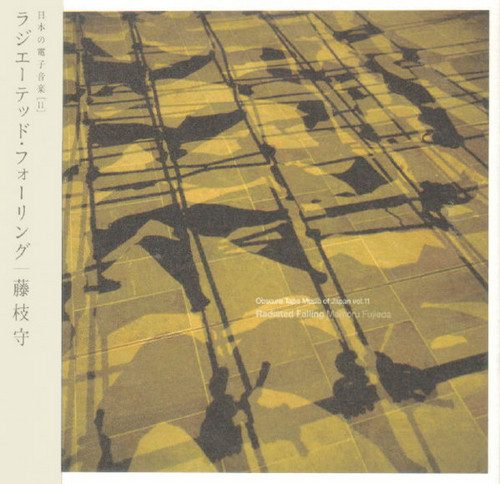Obscure Tape Music Of Japan
The Beginnings of Japanese Electroacoustic Vol.1 - Electronic Music Room 1955-1968
Big Tip! “Oto no Hajimari wo Motomete” is the NHK Electronic Music Archives. The NHK Electronic Music Studio was established in the mid-1950s as the world's most advanced electronic music studio. The sound origins started in 1993 as a memorial to the studio's creator, Hiroshi Shiotani. Currently blasting ahead towards the 70th anniv. of electronic music in Japan in 2025! This limited LP version was planned to commemorate the 70th anniversary and forward next generations. A second series is pla…
Early Sound Installations
In the early 1980s, several artists such as Satoshi Ashikawa and Hiroshi Yoshimura, who were pioneers during the early days of Japanese sound art, began to display their works at exhibitions. Ashikawa, who passed away at the young at the age of 30, worked at Art Vivant, a store affiliated with the Seibu Museum of Art in Tokyo, and was one of the first to introduce materials and records of environmental and experimental music from outside of Japan. Artists began coming to Art Vivant to see Ashika…
A Group for Experimental Music
Edition of 50. CD+CDR+poster CDR is included the following three tracks are recorded by using Rionocorder, a flexi disc cutting machine by Rion, released in 1962. Therefore, the sound range is narrow with a lot of scratch noises. Since there was a time limit to fix these issues, it was decided not to include the piece in the CD.The reason it was used despite this performance, is because they also had an experimental approach to the recording method.
tr.1_Hajime Yamashita : Mural (Abstract for Pi…
Obscure Tape Music Of Japan Vol. 26: Meikai no Heso
* Limited to 60 copies * A collection of small tape music pieces by the legendary composer and pianist Yuji Takahashi. All of them are premiere release on disc.tr.1 Meikai no Heso (The Umbilicus of Limbo, 1963) It is also known as Window to Antonin Artaud, or The Umbilicus of Limbo. it was performed in a version of tape and instruments - poetry reading of the French poet Antonin Artaud, which was modified on the tape, and bass instruments as well as percussion instruments. This is a live recordi…
Obscure Tape Music Of Japan Vol. 25: Night Event At Festival Plaza In Expo '70
At the World Exposition held in Osaka in 1970, many multi-media works such as experimental music were presented at different pavilions. Some of the recordings were released on discs, however, the information was lacking what music was produced for what event held at the Festival Plaza. Although many sound sources were lost, we managed to analyze some part of treasurable recordings that were still available! tr.1 "Flag, Flag, Flag and Plaza of Light" (music: Yori-aki Matsudaira) The event was a …
Obscure Tape Music Of Japan Vol. 24: Music for Film Genjitsu
**Special edition with bonus CDR "Music for Play Soyosoyo-zoku no Hanran" (1971) composed by Joji Yuasa. 50 copies only** Edition Omega Point presents work by legendary Japanese composer Joji Yuasa - Genjitsu was a film created in 1966 by a director Tetsuji Takechi, known as a legend of Showa eroticism. But this film has been hidden somewhere somehow from the public for a long time. The film’s story focuses around a prostitute and has a strong fantasy literature style to it as one may have guess…
Music for Tinguely
Last copies**50 copies** New designed cover version of Omega Point’s early Toshi Ichiyanagi LP appeared just now! Ichiyanagi is the best known composer for domestic and foreign avant-garde music fans. Especially during the brilliant 1960's, he created many great tape music pieces. This LP includes some of his most obscure tape works. Music for Tinguely was made from junk objects created by kinetic sculptor Jean Tinguely. Appearance is a piece of live electronic music and includes the participati…
Aoi-no-Ue
Last copies **50 copies** New designed cover version of Omega Point’s early Joji Yuasa LP appeared just now! "Aoi-no-Ue is composed mainly based on metamorphosed sound of Noh-chant. The other sound is concrete sound such as birds songs, water drops, glasses, warped sound of vibraphone, some generated electronic sound and others. My Blue Sky (No.1) is a special electronic work for me, for most of my other works on this field are based on White Noise. Where as only this piece is exceptionally usin…
Pratical Concert 1976-78
GAP is an improvisation group which was founded by Kiyohiko Sano, Masaru Soga and Masami Tada in the Mid 1970’s. Gap had only one album on the famous ALM records, and from the early time, they played oscillators and synthesizers, adding to simple self-made instruments, and made a free improvisational performance which is comparable to Taj-Mahal Travellers. Especially for Tada who was under tutelage of Takehisa Kosugi, GAP was a missing-link which lead him from East Bionic Symphonia to Marginal C…
Environmental Music for Dining Room of Athletes' Village in Tokyo
From participation in the early Fluxus to giving an introduction of Futurism, Kuniharu Akiyama (1929-1996), a renowned music critic, was involved in a vast range of activities. Particularly in the 1960s, he recorded a lot of music on tape for himself. To our surprise, the music compiled on this CD was actually discovered from a series of ambient music pieces played in the Athletes’ Village at the Tokyo Olympics! During this period, Akiyama was fascinated by the sound of Sanukite stone from Sanuk…
Shikisokuzekuu-Kuusokuzeshiki
The details of Shikisokuzekuu-Kuusokuzeshiki (1964) are unknown except that it was created at the NHK electronic music studio. According to Toshi Ichiyanagi, there were various discussions about the title, but it would seem to have been eventually broadcasted on the radio with the title Kuu after a producer renamed it. Here, the original title is used, following Ichiyanagi's initial intention. This work has no relation to the short experimental film Shikisokuzekuu (1974), produced by filmmaker T…
Obscure Tape Music Of Japan Vol. 12: Miniatures Of Concrete Works
Edition Omega Point presents work by legendary Japanese composer Joji Yuasa -- one of most important composers in Japan after World War II. "Nadja, Twincling in Stars" (1963) is the incidental music, by NHK Radio, based on "Nadja" by Andre Breton who made "Declaration of Sur-Realisme." The actual chart of constellations was played by three players (violin, piano and vibraphone) which was used as the music score. Birdsong, electronics, and sound generated from inside the piano using music c…
Obscure Tape Music of Japan, Vol. 19: Kumo no Ito (The Spider's Thread)
"Kumo no Ito" (trans. "The Spider's Thread): "In 1977 I started the project of a musical piece for a female narrator and 4-channel electronic sounds using the text of the well-known Akutagawa novel. I worked with a hand-made analog synthesizer which had been installed two years before in my home studio in Tokyo. Needless to say, the editing was done without digital machines. I worked with the recorded tapes together with scissors and splicing tape. It was the resonance-adding apparatus tha…
Echoes
*2022 stock* "'Emerald Tablet' was recorded at the NHK electronic-music studio in 1978. It is made up of only the sonic ingredients of a tubular bell, cymbals, and 'kin,' a largish-sized bell used for Buddhist memorial services in Japan. The attack of the sound of each instrument was eliminated, and the work was taped through repeated overdubbing. This produced a variety of beautiful harmonics that otherwise could not be produced from a single instrument's sound, and the interference of harmonic…
Funakakushi (1963)
**2022 stock "Funakakushi" [1]: This electronic work was composed for the opening ceremony of the hotel "Funakakushi-en" in Kagawa prefecture in 1963. It was realized as a sound installation and used many speakers inside a built-in stone sculpture. They were designed by sculptor Mitsu-aki Sora (b. 1933) and were arranged here and there in the main garden of the hotel. The sound was made from a modified Japanese traditional instrument, biwa, as well as from a sea wave sound [2]. The engineer Juno…
Early Works
Edition Omega Point presents a collection of early work from Japanese experimental composer Kazuo Uehara. "'Seoul 1982' was composed using recorded sounds as raw material to reassemble the 'historical' soundscape of Korea's capital city, Seoul, in the early 1980s. During this time, despite the political chaos and the tension in the city under the Korean military government, I felt the lively energy in people's lives. The raw material comprised a wide range of different sounds, including th…
Event '73
"From 1972 to 1973, I was based in New York for my creative activities and live performances. New York at this time was in its golden age of experimental music. Towards the end of my stay, I held a live performance entitled Event '73 to sum up my creative works in New York. The venue for the performance was The Kitchen of the Mercer Arts Center that provided spaces for innovative and emerging artists. This CD consists of a mixture of sounds that were created at a studio prior to the live …
Kusabira. Obscure Tape Music of Japan vol. 13
One of the pioneers of Japanese electronic music, Makoto Moroi, composed "Kusabira" for Kyogen (traditional comedy theater) with electronic sound in 1964. "Kusabira" means "mushroom." A strolling Buddhist monk, Yamabushi, tried to exterminate many mushrooms that grew in the garden of a man's home. However, his magic did not take effect on them but also the Mushrooms began to increase. The man and Yamabushi were driven out of the home by a large Mushroom, finally. In this work, Moroi used abstrac…
Background Sound In Textile Pavillion Of Expo '70. Obscure Tape
At the EXPO '70 in Osaka, many avant-garde artists contributed architectural, space, environmental design and sound works. In the Textile Pavillion ("Sen-i Kan" in Japanese), Japanese composer Joji Yuasa and filmmaker Toshio Matsumoto presented a remarkable experimental event, "Space Projection 'Ako'" for multi-channel tape music and image projection. Also included in the presentation at the Pavillion was background sound for several spaces and objects, composed by Joji Yuasa, mainly. This…
Radiated Falling. Obscure Tape Music of Japan vol. 11
Mamoru Fujieda is a Japanese post-minimalist composer, and Edition Omega Point releases some of his work from the early '80s. Both "Radiated Falling" (1980) and "The Art Of Fugue" (1981) are tape compositions in which sound materials of a prepared piano are electronically-processed and modulated in various ways. "Radiated Falling" is based on "Falling Scale No. 2" for piano (1975). The series of works entitled "Falling Scale" are composed almost entirely of descending scales as their stru…
